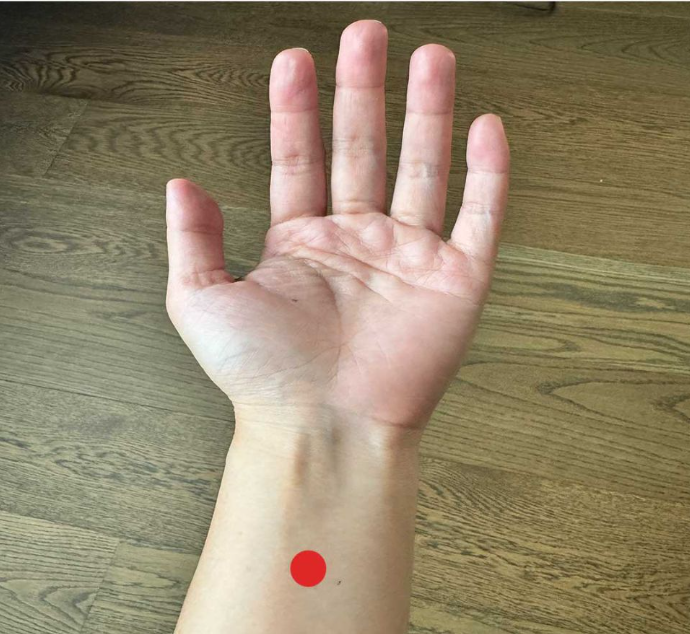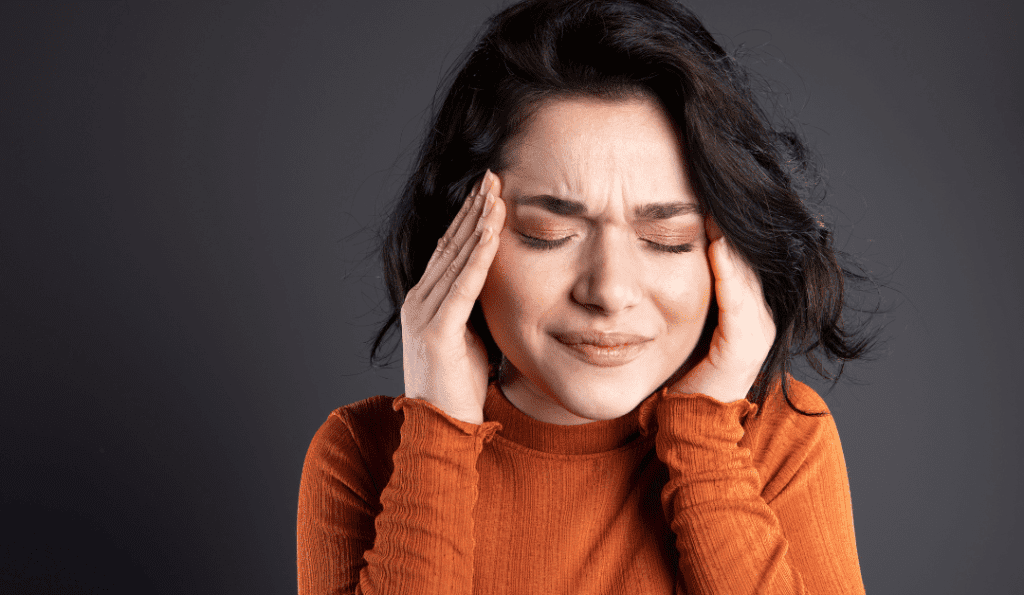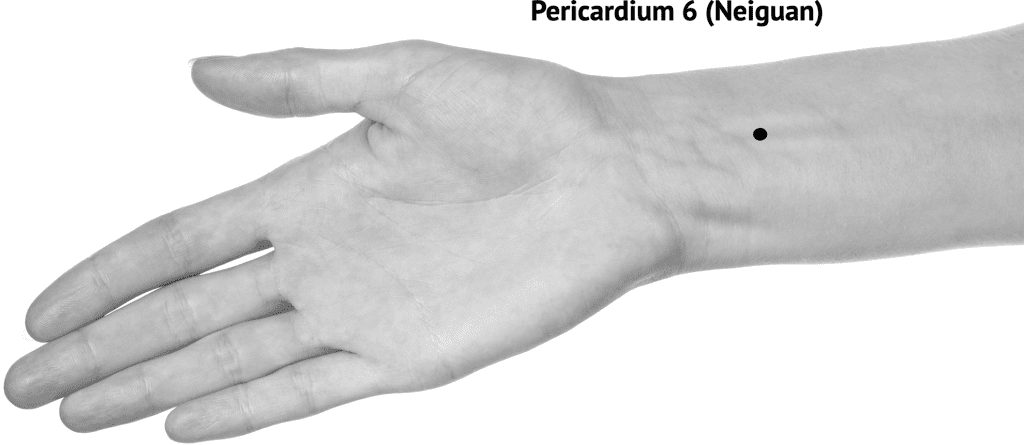Did you know that pressing a specific point on your wrist can have incredible health benefits? This ancient technique, rooted in traditional Chinese medicine, involves stimulating a point called the Nei Guan (Pericardium 6), which is renowned for its therapeutic effects on the body. From easing nausea to reducing anxiety, this simple yet powerful acupressure point can bring balance to your body and mind. Let’s explore how this technique works, its benefits, and how you can safely incorporate it into your wellness routine.
What is the Nei Guan Point and Where Is It Located?

The Nei Guan point is one of the most significant acupressure points used in traditional Chinese medicine. It is located on the inner side of your forearm, approximately two to three fingerbreadths above the wrist crease, between the tendons of the palmaris longus and flexor carpi radialis muscles. You can easily find this point by turning your palm up, placing three fingers just above your wrist crease, and applying gentle pressure between the tendons in this area.
This point, part of the pericardium meridian, is believed to protect the heart’s energy and calm the spirit. It has been used for centuries to address various health issues, making it a go-to remedy in both traditional and modern acupressure practices.
The History and Traditional Use of the Nei Guan Point
In traditional Chinese medicine, the Nei Guan point has been a cornerstone of healing techniques for over a thousand years. Practitioners believed that stimulating this point helps regulate heart energy, promote emotional balance, and maintain physical well-being. It was often used to treat symptoms like heart palpitations, stress, and even motion sickness.
As this practice evolved, its benefits spread beyond China and are now used worldwide to manage nausea, anxiety, and digestive issues. Its long-standing role in holistic health continues to grow, blending ancient wisdom with modern wellness practices.
How Pressing the Nei Guan Point Affects Your Body
Stimulating the Nei Guan point through gentle pressure has multiple physiological effects on the body. In traditional Chinese medicine, it’s believed to balance the body’s flow of energy, or “qi,” and remove any blockages that could lead to illness or discomfort.
But how does this work on a physical level? Pressing this point influences the nervous system, promoting relaxation and reducing anxiety. It can also improve circulation by affecting the cardiovascular system, leading to better heart health and more balanced blood pressure. The effect is like hitting a reset button, bringing your body back into harmony.
How the Nei Guan Point Helps Relieve Nausea
One of the most well-known benefits of pressing the Nei Guan point is its ability to relieve nausea and vomiting. Whether you’re dealing with motion sickness, morning sickness during pregnancy, or nausea caused by chemotherapy, applying pressure to this point can provide relief.
This happens because the stimulation affects the vagus nerve, which is responsible for regulating several key functions in the body, including digestion. By calming the vagus nerve, the body can reduce nausea signals and promote smoother digestion. In fact, many people use acupressure wristbands designed specifically to target the Nei Guan point for nausea relief when traveling or during pregnancy.
The Calming Effect on the Nervous System

Besides helping with nausea, pressing the Nei Guan point can have a calming effect on your nervous system. The body’s response to stress is often triggered by the sympathetic nervous system, which can cause feelings of anxiety, tension, and unease.
By stimulating this acupressure point, you activate the parasympathetic nervous system, which helps reduce stress and encourage a state of relaxation. This natural calming effect makes the Nei Guan point an excellent option for anyone looking to manage stress, anxiety, or even sleep issues.
How It Can Benefit Heart Health and Circulation
The Nei Guan point is linked with the pericardium, a membrane that surrounds and protects the heart. In traditional Chinese medicine, this connection makes it an important point for promoting heart health.
By pressing this point, you can potentially improve circulation and help stabilize your heart rate. Some studies suggest that stimulating this point may even help lower blood pressure and reduce the risk of cardiovascular issues, though more research is needed to fully confirm these effects.
Relief from Headaches and Migraines

If you suffer from headaches or migraines, pressing the Nei Guan point might offer relief. In traditional Chinese medicine, headaches are often thought to result from energy blockages or imbalances. Stimulating this acupressure point helps release these blockages, promoting better blood flow and easing headache symptoms.
The soothing, stress-relieving effects of Nei Guan can also help reduce the intensity and frequency of migraines, making it a handy tool for those who suffer from chronic headaches.
How to Properly Stimulate the Nei Guan Point
If you’re ready to give this natural remedy a try, here’s how to properly stimulate the Nei Guan point:
- Locate the Point: Use your opposite hand to measure two to three finger widths from your wrist crease. Apply gentle pressure in the gap between the tendons.
- Apply Pressure: Use your thumb to press down on the point, applying firm but not painful pressure. Make small, circular motions while maintaining the pressure.
- Breathe Deeply: As you press the point, take deep, slow breaths. Focus on relaxing your body and letting go of tension.
- Hold for 1-2 Minutes: You can hold the pressure for one to two minutes, repeating as necessary throughout the day. Remember to switch to the other wrist if needed.
Scientific Studies Supporting the Benefits of the Nei Guan Point

There is scientific evidence supporting the traditional use of the Nei Guan point in modern medicine. Studies have shown that applying pressure to this point can significantly reduce postoperative nausea and chemotherapy-induced nausea. Additionally, some research suggests that it can improve heart rate variability, which is a measure of the body’s ability to manage stress and overall cardiovascular health.
While more studies are needed to confirm all its potential benefits, the existing research offers promising support for the use of this acupressure point in holistic health practices.
Conclusion: Harnessing the Power of the Nei Guan Point for Health and Wellness
The Nei Guan point is a powerful tool in both traditional and modern medicine, offering numerous benefits for both physical and mental well-being. Whether you’re looking to relieve nausea, reduce stress, or support your heart health, this simple acupressure technique can provide a natural, non-invasive approach to health care. By learning to stimulate this point correctly, you can tap into the centuries-old wisdom of traditional Chinese medicine and enhance your overall quality of life.


